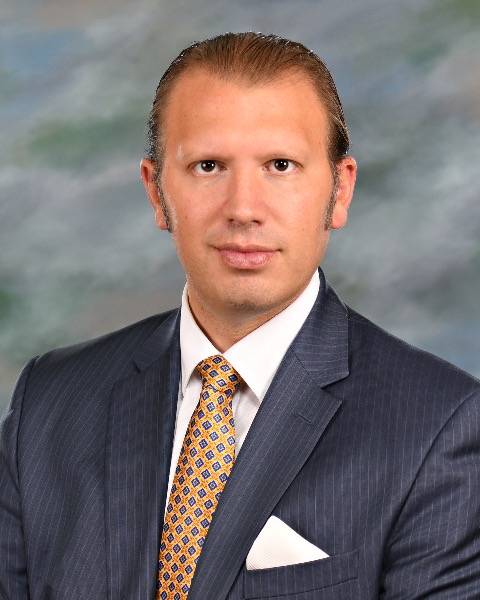Spine
Initial Outcomes of Adult Spinal Deformity Surgical Correction with Utilization of Single Position Prone-Lateral Approach
Initial Outcomes of Adult Spinal Deformity Surgical Correction with Utilization of Single Position Prone-lateral Approach

Peter G. Passias, MD
Professor
Duke University
Duke University Heath System
New Canaan, CT, US
Presenting Author(s)
Introduction: Prone-lateral (PL) positioning has become increasingly popular in ASD surgery due to numerous potential benefits, such as lower blood loss and operative time. However, PL has not yet been examined for other notable outcomes, such as realignment and patient-reported outcomes.
Methods: Operative ASD patients undergoing minimally invasive surgery with available baseline and perioperative data were isolated. Patients stratified into groups based on undergoing prone-lateral (PL) or not prone-lateral (NPL) approach. Descriptive analyses and means comparison tests identified differences in baseline parameters, surgical characteristics, radiographic and deformity measurements, rates of perioperative complications, and patient-reported outcome measures in the perioperative period (90 days postoperatively).
Results: 233 included(59.7±9.78years, 49%female, 31.6±6.72kg/m2, CCI: 2.68±1.41). Approach: PL 6.4% (n=15) and NPL 93.6% (n=218). Baseline NRS-Back score was 8.25±2.02, which improved to 5.42±2.89 at 2 years. Baseline radiographics (S1 sacral slope, PI-LL, PT, SVA) were similar between the groups (all p>.05). PL patients experienced significantly less operative time (352.9 vs. 534.6 mins, p<.001) and EBL (564.6 vs. 1504.2 mL, p<.001) but had fewer levels fused (5.7 vs. 7.2, p=.025). The groups were similar in age, gender, BMI, CCI, and rate of decompressions and osteotomies performed (all p>.05). PL patients had lower baseline NRS-Back (7.0 vs. 8.34, p=.033) compare to NPL. Despite comparable readmission rates within 90 days, PL patients had lower odds of reoperation (0% vs. 14%, OR: 2.44 [1.23, 3.13] p<.001) and lower rates of SICU admission (0% vs. 52%, OR: 3.52 [1.65, 2.15] p<.001). Overall PL patients had shorter length of stay (4.3 vs. 7.3 days, p<.001) compared to NPL. Perioperative complications were overall lower odds for patients undergoing PL approach (OR: .26 [1.56, 2.15], p=.022), with less rates of discharge to rehabilitation facility after leaving hospital (.5% vs 13%, p<.001).
Conclusion : This study aimed to quantify perioperative differences in prone lateral approach compared to other minimally invasive approaches. Single position prone-lateral approach to adult spinal deformity correction is less invasive with potentially improved perioperative outcomes.
Methods: Operative ASD patients undergoing minimally invasive surgery with available baseline and perioperative data were isolated. Patients stratified into groups based on undergoing prone-lateral (PL) or not prone-lateral (NPL) approach. Descriptive analyses and means comparison tests identified differences in baseline parameters, surgical characteristics, radiographic and deformity measurements, rates of perioperative complications, and patient-reported outcome measures in the perioperative period (90 days postoperatively).
Results: 233 included(59.7±9.78years, 49%female, 31.6±6.72kg/m2, CCI: 2.68±1.41). Approach: PL 6.4% (n=15) and NPL 93.6% (n=218). Baseline NRS-Back score was 8.25±2.02, which improved to 5.42±2.89 at 2 years. Baseline radiographics (S1 sacral slope, PI-LL, PT, SVA) were similar between the groups (all p>.05). PL patients experienced significantly less operative time (352.9 vs. 534.6 mins, p<.001) and EBL (564.6 vs. 1504.2 mL, p<.001) but had fewer levels fused (5.7 vs. 7.2, p=.025). The groups were similar in age, gender, BMI, CCI, and rate of decompressions and osteotomies performed (all p>.05). PL patients had lower baseline NRS-Back (7.0 vs. 8.34, p=.033) compare to NPL. Despite comparable readmission rates within 90 days, PL patients had lower odds of reoperation (0% vs. 14%, OR: 2.44 [1.23, 3.13] p<.001) and lower rates of SICU admission (0% vs. 52%, OR: 3.52 [1.65, 2.15] p<.001). Overall PL patients had shorter length of stay (4.3 vs. 7.3 days, p<.001) compared to NPL. Perioperative complications were overall lower odds for patients undergoing PL approach (OR: .26 [1.56, 2.15], p=.022), with less rates of discharge to rehabilitation facility after leaving hospital (.5% vs 13%, p<.001).
Conclusion : This study aimed to quantify perioperative differences in prone lateral approach compared to other minimally invasive approaches. Single position prone-lateral approach to adult spinal deformity correction is less invasive with potentially improved perioperative outcomes.

.jpg)